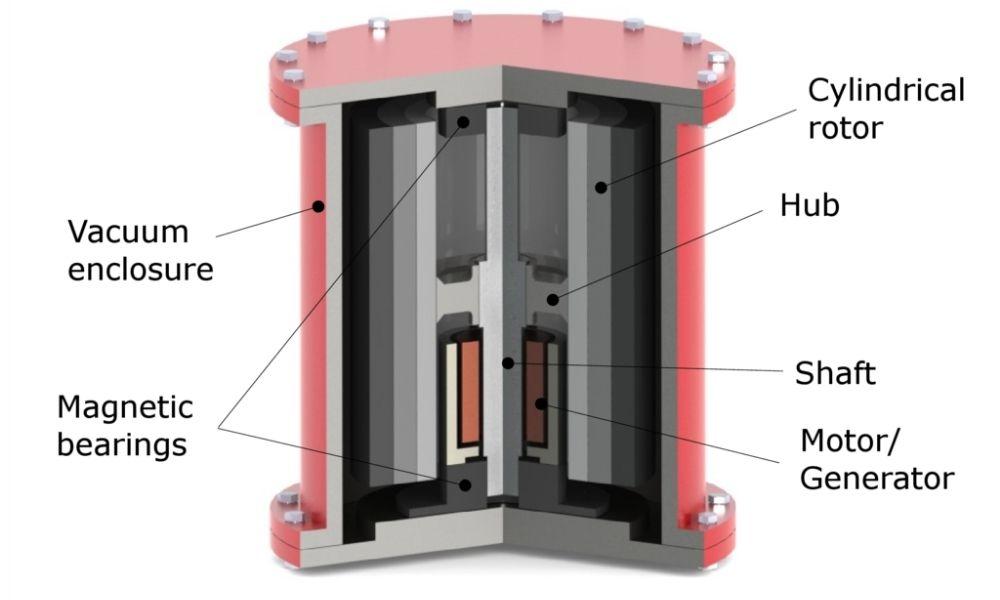What is Flywheel Energy Storage?
A flywheel energy storage system is an electromechanical energy conversion and storage device, belonging to physical energy storage. It stores kinetic energy through high-speed rotation of the flywheel body and drives an electric generator to complete the conversion between kinetic energy and electric energy.
Components of the System
Flywheel Body
Made from high-strength materials (such as carbon fiber) to withstand the centrifugal forces of high-speed rotation.
Motor/Generator
For conversion between electrical and mechanical energy.
Bearing System
Supports the flywheel and reduces friction losses; commonly used are magnetic levitation bearings and mechanical bearings.
Vacuum Chamber
Reduces air resistance and improves the rotational efficiency of the flywheel.

Working Principle
When storing energy, the electric energy drives the motor to run through the transformation, the motor drives the flywheel to accelerate the rotation, and the flywheel stores the energy in the form of kinetic energy, completing the process of storing energy by converting the electric energy to mechanical energy, and the energy is stored in the high-speed rotating flywheel body.
During the energy release phase, the high-speed rotating flywheel drives the motor to generate electricity, outputting current and voltage suitable for the load, thus completing the conversion from mechanical energy to electrical energy.

Key Advantages
Fast Response
Capable of charging and discharging in milliseconds to meet the demand for fast dynamic response.
Minimal losses during the energy conversion process effectively improve energy utilization.
Strong durability
The flywheel structure is relatively simple, not easy to damage, with a long service life.
Eco-Friendly
Produces no harmful substances, making it environmentally friendly.
Application Scenarios
Grid Frequency Regulation
To address imbalances in power generation and consumption, the grid requires frequency regulation stations with a total generating capacity of 2%. The demand for this will increase with the integration of renewable energy.
Urban Rail Transit
Flywheel storage captures energy when trains enter stations and releases it upon departure, enhancing energy efficiency and reducing grid impact.
UPS market
It is mainly used in scenarios with uninterruptible power supply requirements, such as data centers, communication base stations, etc., taking advantage of its advantages of fast response speed, high instantaneous power, small footprint, and long service life.
Electric Vehicle Charging Stations
Flywheel storage alleviates the pressure on the grid from high-power, fast-charging electric vehicles while avoiding grid capacity constraints.
Future Development Trends
The global flywheel energy storage systems market size was estimated at USD 461.11 billion in 2024 and is expected to grow at a CAGR of 5.2% from 2025 to 2030. Modern flywheel energy storage systems have become green energy storage devices, in view of the characteristics and advantages of flywheel energy storage technology, the future flywheel energy storage system will be in the field of electric power systems, including renewable energy grids, frequency regulation, and other directions, rail transport, UPS, aerospace and aviation, and other military fields will play an important role.

Conclusion
Flywheel energy storage systems will play a key role in renewable energy integration, helping to balance power supply. Along with the elevated adoption of renewable energy worldwide, flywheel energy storage will become an important energy storage solution to ensure stable grid operation.